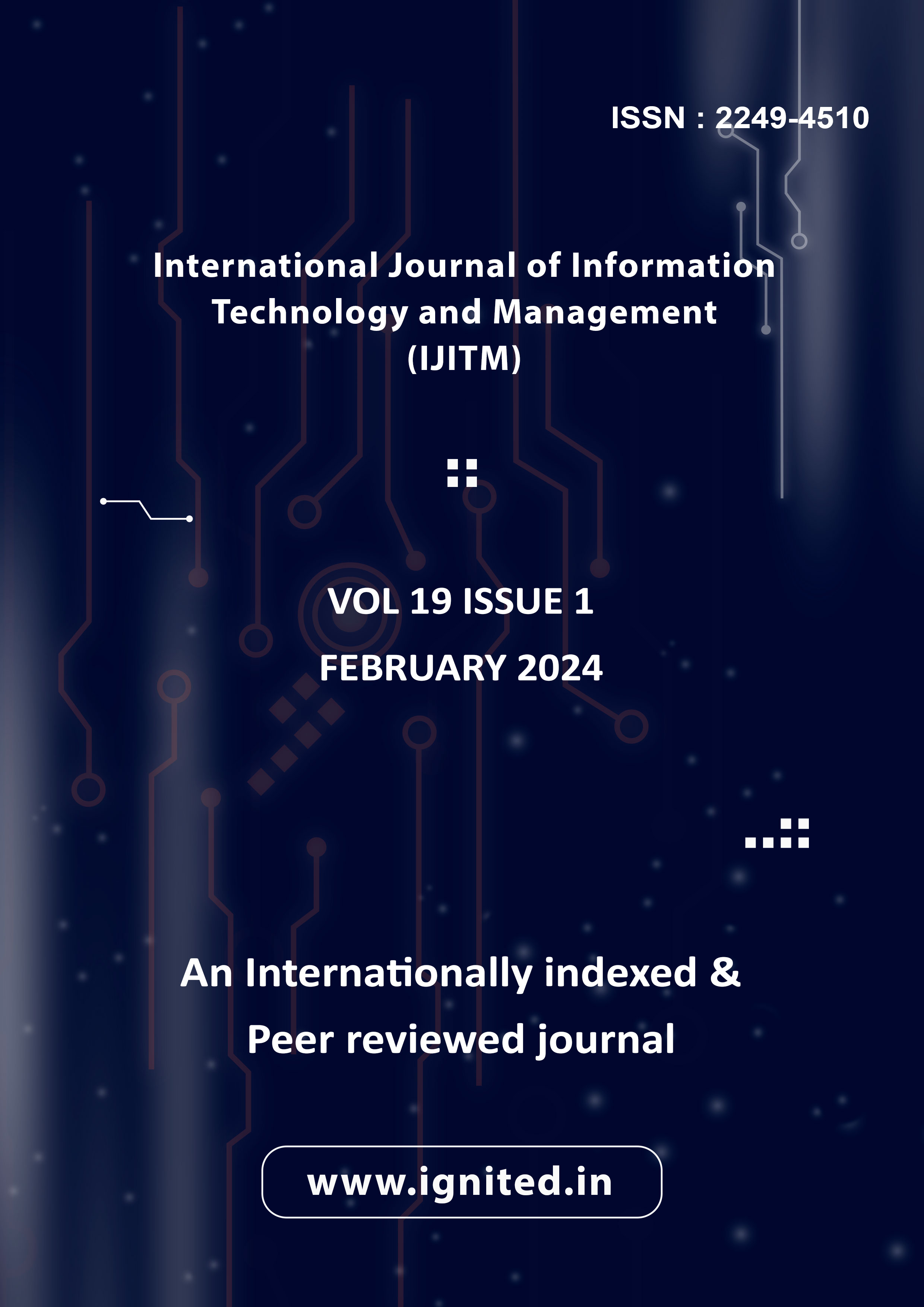A Study on Measuring the Impact of Business Process Management on an Organization’s Business Performance Superiority
Main Article Content
Authors
Abstract
The study's overarching goal is to quantify the effect of BPM on the improved business performance of participating organisations. The research used the corporate process management life cycle methodology to identify the concept of superiority. Along with describing the operational and competitive dimensions of business performance superiority, the opinions and responses of the 89 managers who made up the sample were utilised to describe (process identification and design, process modelling and documentation, process monitoring and controlling, and process optimisation). To validate the study's hypothesised model and draw attention to BPM's role in explaining why some organisations outperform others, researchers performed multiple regression analysis. Organisational managers must provide moral and financial support for business process orientation within the business entrepreneurship window in order for their organisations to maintain a competitive advantage in an uncertain, risky, and potentially volatile environment.
Downloads
Article Details
Section
References
- Adams, C., & Terziovski, M. (2016). Business process management and its importance to performance improvement initiatives. Business Process Management Journal, 22(4), 689-709.
- Al-Azmi, A., & Bhatti, T. (2015). Business process management and organizational performance: A comparative study. International Journal of Information Management, 35(5), 605-613.
- Al-Mashari, M., & Zairi, M. (2015). Business process reengineering: A survey of international experience. Business Process Management Journal, 1(1), 27-42.
- Almutairi, M. (2017). The impact of business process management on organizational performance: A case study approach. Business Process Management Journal, 23(6), 1265-1282.
- Bandara, W., Gable, G. G., & Rosemann, M. (2015). Factors influencing perceived business process improvement success. Journal of Strategic Information Systems, 24(3), 191-214.
- Bose, R. (2015). Business process management and ERP. Journal of Information Technology Cases and Applications, 17(2), 3-22.
- Davenport, T. H. (2013). Process innovation: Reengineering work through information technology. Harvard Business Press.
- Gollmann, D., & Holten, R. (2015). Business process management. IEEE Transactions on Software Engineering, 41(3), 216-234.
- Hammer, M., & Champy, J. (2015). Reengineering the corporation: A manifesto for business revolution. Harper Business.
- Harmon, P. (2016). Business process change: A guide for business managers and BPM and Six Sigma professionals (4th ed.). Morgan Kaufmann.
- Johannsen, W., & Goeken, M. (2016). How the integration of BPM and ERP systems improves business process outcomes: A multiple-case study. Business Process Management Journal, 22(1), 79-104.
- Jost, S., & Zettel, G. (2015). Business process management in the context of enterprise resource planning systems: A literature review. Journal of Information Technology Management, 26(3), 18-36.
- Lee, J., & Dale, B. G. (2017). A systematic approach to business process management: Modelling, design, and implementation. Total Quality Management & Business Excellence, 28(9-10), 1111-1125.
- Loh, L., Sheng, O. R. L., & Pittayachawan, S. (2015). A review on business process management competencies: Theories, dimensions, and trends. Business Process Management Journal, 21(4), 723-753.
- Magal, S. R., & Word, J. (2015). Essential business processes: Implementing ERP systems. Wiley.
- Malakooti, B. (2013). Operations and production systems with multiple objectives. John Wiley & Sons.
- Pohlen, T. L. (2015). Using business process management to improve operational efficiency. Business and Management Research, 4(2), 1-10.
- Porter, M. E. (2015). Competitive advantage: Creating and sustaining superior performance. Free Press.
- Rainer, R. K., & Turban, E. (2013). Introduction to information systems: Supporting and transforming business (5th ed.). Wiley.
- Salmela, H., & Spil, T. A. M. (2015). Business process management: A comprehensive survey. ISRN Software Engineering, 2015, Article ID 583621.
- Schmidt, R., & Buxmann, P. (2015). Business process management systems: Bridging the gap between business and IT. Business & Information Systems Engineering, 57(1), 3-10.
- Smith, H. A., & Fingar, P. (2015). Business process management: The third wave (3rd ed.). Meghan-Kiffer Press.
- Tiwana, A. (2014). The essential guide to knowledge management: E-business and CRM applications. Prentice Hall.
- Van der Aalst, W. M. P. (2016). Process mining: Data science in action. Springer.
- vom Brocke, J., & Rosemann, M. (2014). Handbook on business process management 1: Introduction, methods, and information systems. Springer.
- Wailgum, T. (2013). Supply chain management best practices. John Wiley & Sons.
- Weske, M. (2012). Business process management: Concepts, languages, architectures. Springer.
- Wixom, B. H., & Watson, H. J. (2015). The current state of business intelligence. IEEE Computer Society Press.
- Yadav, N., & Sharma, S. (2016). Business process management and its impact on organizational performance: A case study of Indian manufacturing firms. Global Journal of Flexible Systems Management, 17(1), 33-46.
- Zairi, M., & Al-Mashari, M. (2015). Business process reengineering: A survey of international experience. Business Process Management Journal, 1(1), 27-42.

